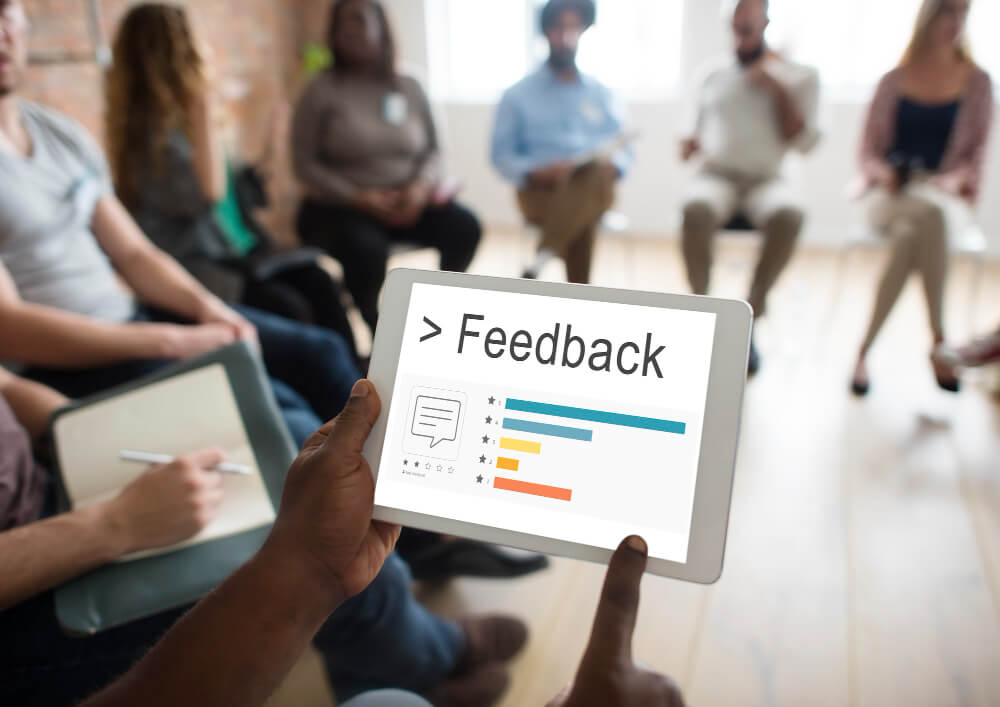Rated Feedback Process
Getting feedback on a facilitation process is an important part of ongoing learning, development and application for facilitators. However, people are often reluctant to give critical feedback. And, sometimes, when feedback is given, it isn’t clear whether the feedback is the view of one individual or the entire team. The rated feedback process is a vehicle to help ensure you get quality comments and that you understand the amount of support for those comments.
In the rated feedback process, you ask the group to identify strengths first, being sure to get everyone involved. You then ask the group to identify ways to improve. Note that you do not ask for weaknesses. Instead, you ask for specific ways the session could have been improved. The “ways to improve” terminology serves to keep the discussion constructive using the “Here is what I liked – here is how to make it better” format. In addition, by identifying strengths first, people who are reluctant to criticize tend to be more open to indicating ways to improve.
Once you have identified ways to improve, go back and ask for a show of hands of those who agree with the improvement suggestion. In this way, you get critical feedback, along with ratings indicating the level of support for each feedback suggestion.
EXAMPLE: The table below outlines steps for a sample scenario (a process improvement team facilitating a session on improving their existing hiring process). The team is on the last agenda item – “Review and Close.” They have reviewed the actions that occurred in the process as well as all decisions, issues and actions. They are now ready for detailed feedback on the session itself.
| Technique |
Rated Feedback |
Function: Feedback |
1. Describe the activity and purpose. (Note that you may have already done this through the checkpoint.)
2. Use PeDeQs to describe the general directions.
3. Start with strengths. Ask a starting question and use a round-robin technique to include everyone. Check mark similar comments.
4. Move onto ways to improve. Instead of a round-robin, have participants randomly indicate suggestions.
5. Go back and review each improvement suggestion and ask for a show of hands for the number of people who support each. If it is a small group you might count the individual hands. If it is a larger group, it might be faster to estimate the percentage that agree.
|
||
Curious about terms like “PeDeQs” and the “starting question”? Please review my previous blog entries or sign up for The Effective Facilitator, where this information plus more is taught in depth.
________________________
Certified Master Facilitator Michael Wilkinson is the CEO and Managing Director of Leadership Strategies, Inc., The Facilitation Company and author of the new The Secrets of Facilitation 2nd Edition, The Secrets to Masterful Meetings, and The Executive Guide to Facilitating Strategy. Leadership Strategies is a global leader in facilitation services, providing companies with dynamic professional facilitators who lead executive teams and task forces in areas like strategic planning, issue resolution, process improvement and others. The company is also a leading provider of facilitation training in the United States.

